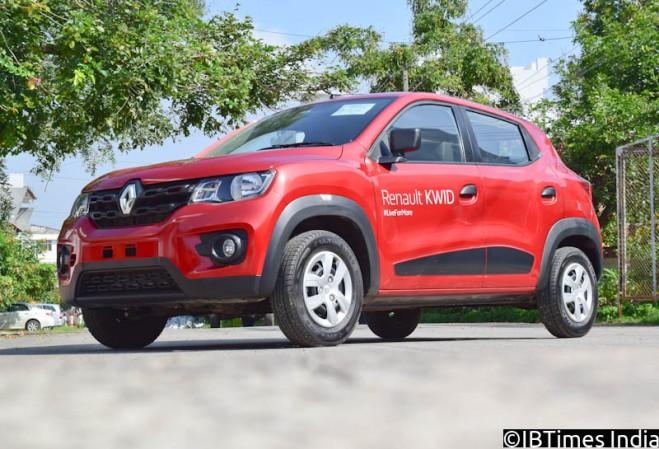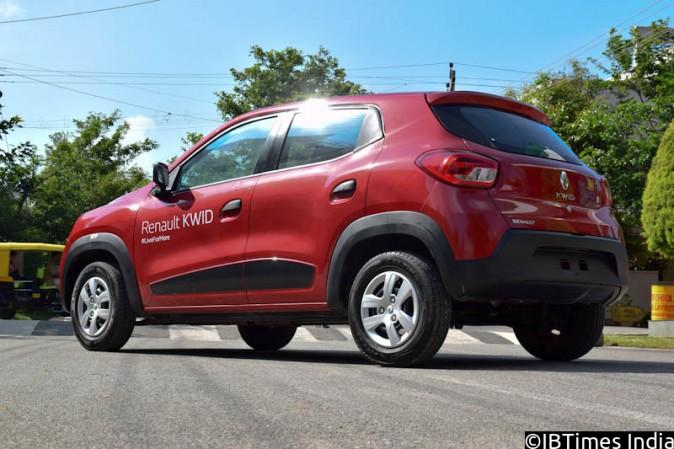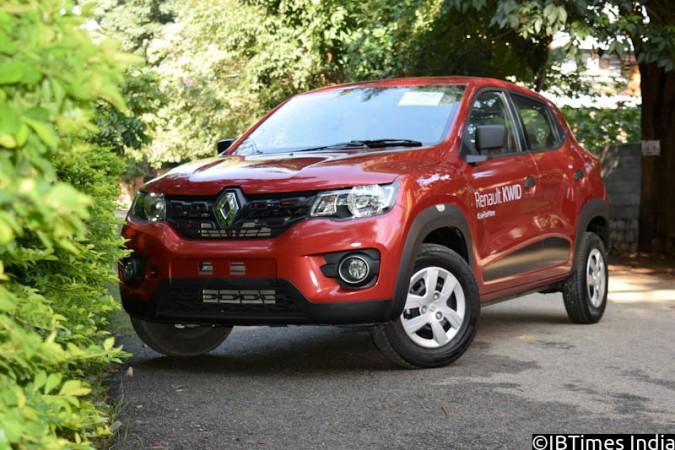
If you want to make a statement in the volume selling entry-level hatchback, which is the domain of Maruti Suzuki and Hyundai Eon, you have to do thorough homework and will be forced to spend many sleepless night. Renault India has made that effort, and the result is the Kwid hatchback.
Despite Renault being a company whose only bread-and- butter model is the Duster SUV, the Kwid has got a massive response from the market. The hatchback recently crossed 50,000 bookings and the waiting period reached over six months. The inherent question is why such a large interest in the Kwid. We drove the car to find out.
Design and Styling
How to be different from the main rivals like Maruti Suzuki Alto and Hyundai Eon would have been the task Renault gave its designers while preparing the Kwid. It is commendable that the designers were successful in their job, and what the Kwid offers is a hatchback in an SUV-ish stance.
The car unmistakably inspired by the Duster's design boasts of 180mm ground clearance. The pseudo-SUV profile is accentuated with thick cladding and a rugged grille. The headlamps and tail lamps are not unique in design, but cohesive to the overall looks. The only criticism is the 13-inch wheels, which look disproportionate and leave huge wheel wells between tyres and the wheel arch.

Renault went for practicality and simplicity in the interior design. The plastic dashboard neatly sports a segment leading 7-inch touchscreen that offers Bluetooth connectivity and navigation in the top-end RXT and RXT(O) variants. Behind the chunky three-spoke steering wheel is the large digital instrument cluster which is again a segment-first. The instrument cluster showcases gear shift indicator while the tachometer gives a miss.
[Also read: 2015 Mahindra Mojo test ride review]
Space is something the Kwid offers in plenty, compared to the rivals. Even a six-footer like me found a comfortable seating position with adequate headroom and legroom in the driver's seat. The front seats are pretty comfy while the rear seats lack under-thigh support. The segment-leading 300-litre boot is big enough for a regular weekend-trip luggage, though at 28 litres, the petrol tank could have been larger.
The cost cutting is obvious in only the front power windows, non-retracting rear seat belts, single wiper and three-bolted wheels. We found it difficult to adjust the rear seatbelt, which took longer than usual.
Engine and Transmission
Under the hood, the Kwid is powered by a 799cc three-cylinder petrol motor, tuned to churn out 53bhp at 5,678rpm and a peak torque of 72Nm at 4,386rpm, mated with a five-speed manual gearbox. The Kwid is the first car to be built on the CMF-A platform, which will underpin many upcoming cars.
Twist the key, and the engine comes to life with a fair bit of vibration, which is part-and-parcel of a three-cylinder engine. The minimal vibration settles once the accelerator is pressed. The engine refinement level is really good. The gearshifts are shorter, which makes driving easier.
Drive and Performance
Where the Kwid really shines over its rivals is the ride-and-handling department. The vehicle sticks to the road even at higher speeds despite being weighing 660kg. It is evident that Renault has taken into account Indian road conditions, and the suspension soaks up the potholes' undulations with minimal impact. On the flip side, the soft suspension along with 180mm ground clearance causes body roll.
The engine is relaxed even at higher speeds, and does not go out of breath. Even at sudden throttle inputs, the engine is not lazy and that makes overtaking easy. However, it being a three cylinder engine, there is a lot of engine noise — a big turn-off. Thankfully, very little creeps into the cabin.
The ultra-light steering wheel is ideal for city driving and useful while parking. The connected feel of the wheels with the steering lacks slightly at higher speed due to the light steering.
The overall driving performance of the Kwid is above the mark. The car feels much more premium with features and roominess inside the cabin. Combined with the engine performance, there is nothing to complain about.
Safety
The Kwid being an entry-level hatchback, the question of safety has great importance. The Kwid meets all the requirements to ply on Indian roads, and the driver-side airbags can be fitted in the range-topping RXT(0) trim.
Fuel efficiency
One of the important deciding factors for the target audience of the Kwid's segment is fuel efficiency. The Renault hatchback returns ARAI-claimed fuel efficiency of 25.17 kmpl, which makes it the most fuel-efficient petrol car in the country.
Price
When Renault launches the Kwid, the icing on the cake is the pricing, which starts at Rs 2.56 lakh and goes up to Rs 3.53 lakh, ex-showroom Delhi. The pricing is pretty neck-and-neck with the Maruti Suzuki Alto 800 and lesser than the Hyundai Eon
| Renault Kwid (ex-showroom, Delhi) | |
| Std | 2.56 lakh |
| RXE | 2.88 lakh |
| RXE (O) | 2.94 lakh |
| RXL | 3.11 lakh |
| RXT | 3.44 lakh |
| RXT (O) | 3.53 lakh |
Verdict
Unique styling, many segment-first features, impressive fuel efficiency, smooth engine and a tempting price makes the Kwid an ideal car for the first-time buyer. What stops them is the concern over availability of service and spare parts. The Renault India network is not as vast as Maruti Suzuki and Hyundai India.
Renault's biggest hurdle is developing that trust among aspiring buyers with dealership and service expansion, which they are currently working on. As far as the car is concerned, Renault has ticked all the right boxes with Kwid.
| Specification | |
| Engine | 3-cyl, 799cc |
| Power | 53bhp @ 5678rpm |
| Torque | 72Nm @ 4386rpm |
| Transmission | 5-speed manual |
| LxWxH | 3679mm x1579mm x 1478mm |
| Wheel base | 2422mm |
| Ground clearance | 180mm |
| Fuel tank capacity | 28-litres |
| Brakes | Disc(F), Drum(R) |
| Tyre size | 155/80 R13 |
Vehicle provided by : Renault Whitefield, Trident Auto Enterprises Pvt. Ltd, 080-67879000



















![India Auto Roundup: Maruti Suzuki, Mahindra have exciting launches in November [details here]](https://data1.ibtimes.co.in/en/full/805520/india-auto-roundup-maruti-suzuki-mahindra-have-exciting-launches-november-details-here.jpg?w=220&h=135)